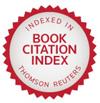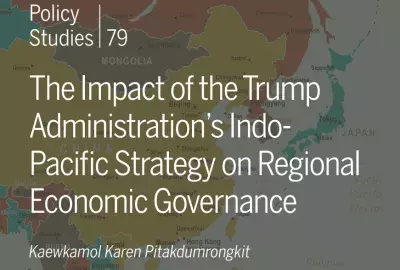Error message

This paper is a guide to the historical arguments made by the primary parties to the Tibet-China conflict. Given the polarization that has characterized this issue for decades, it is surprising that little has been done to analyze or at least disentangle the strands of historical argumentation that the parties have been using. This paper attempts to do this by relying as much as possible on the key assertions as they have been framed in Chinese and Tibetan sources. Chinese- and Tibetan-language materials dealing with the historical status of Tibet are often more detailed and better documented, and hew more closely than English-language materials do to the thinking of the people most directly concerned with (and affected by) the Tibet-China conflict. The status of Tibet is at the core of the dispute, as it has been for all parties drawn into it over the past century. China maintains that Tibet is an inalienable part of China. Tibetans maintain that Tibet has historically been an independent country. In reality, the conflict over Tibet's status has been a conflict over history. When Chinese writers and political figures assert that Tibet is a part of China, they do so not on the basis of Chinese rule being good rule (although they do not hesitate to make that assertion, either), but on the basis of history. As one of China's more well-known spokesmen once put it, "'Is Tibet, after all, a part of China?' History says it is." The fundamental place of history in the Tibet issue is not something imposed by outside parties. Even though the Dalai Lama and his government-in-exile appear quite at ease with accepting Tibet as a part of China, the People's Republic of China (PRC) has pointedly accused the Dalai Lama of duplicity, stating that his unwillingness to recognize Tibet as having been an integral part of China for centuries renders his acquiescence unacceptable. The centrality of history in the question of Tibet's status could not be clearer. This paper looks at the evolution of both Chinese and Tibetan positions, then at the prevailing views currently held by advocates on either side of the issue, and finally at how the major assertions made about Tibet's historical status stand up against the historical record as reflected in relevant primary-source materials in Chinese and Tibetan. Contemporary secondary literature on the Tibet issue has until now not been based on this sort of approach. This paper provides new details and new insights for those concerned with the basic historical arguments that underlie the crucial issue of Tibet's status. It will show that positions on the Tibet issue said to be reflective of centuries of popular consensus are actually very recent constructions often at variance with the history on which they claim to be based. In some areas critical aspects of history have been misconstrued by both sides. Thus, China's contention that Tibet has been an "integral" part of China since the thirteenth century took shape only in the twentieth century. Moreover, as late as the 1950s, Chinese writers were accustomed to describing Tibet's place in the world of imperial China as that of a subordinate vassal state, not an integral part of China, as current Chinese materials put it. Indeed, for quite some time after Tibet was incorporated into the PRC, Chinese narratives of that process were often vague and beset by contradictory chronologies. Similarly, the Tibetan concept of a "priest-patron" religious relationship governing Sino-Tibetan relations to the exclusion of concrete political subordination is itself a rather recent construction. Ample evidence shows that Tibetan religious figures entertained religious and spiritual relationships with emperors of several dynasties, sometimes under conditions in which Tibet was politically subordinate to the dynasty in question and at other times under conditions in which Tibet was independent. The priest-patron relationship was simply not a barometer of Tibet's status, in spite of current Tibetan use of it as such. In addition, one of the major contentions of the Tibetan government-in-exile—that Tibet was invaded in 1949—is a complex and ambiguous issue. The Tibetan government signaled it was under attack only in 1950, when PRC forces crossed into the territories under the jurisdiction of the Dalai Lama's government. Tibetan areas outside the Dalai Lama's jurisdiction had already been incorporated into the PRC. The insistence in recent decades on 1949 as the date of Tibet's invasion is an attempt to define these territories as part of Tibet. Complexity is added to the issue by the fact that these territories have been significant in Tibet's conflict with China. Their cultural place in the Tibetan world is important; the present Dalai Lama comes from this part of the Tibetan Plateau. | Additional titles in the Policy Studies series |

This paper is a guide to the historical arguments made by the primary parties to the Tibet-China conflict. Given the polarization that has characterized this issue for decades, it is surprising that little has been done to analyze or at least disentangle the strands of historical argumentation that the parties have been using. This paper attempts to do this by relying as much as possible on the key assertions as they have been framed in Chinese and Tibetan sources. Chinese- and Tibetan-language materials dealing with the historical status of Tibet are often more detailed and better documented, and hew more closely than English-language materials do to the thinking of the people most directly concerned with (and affected by) the Tibet-China conflict. The status of Tibet is at the core of the dispute, as it has been for all parties drawn into it over the past century. China maintains that Tibet is an inalienable part of China. Tibetans maintain that Tibet has historically been an independent country. In reality, the conflict over Tibet's status has been a conflict over history. When Chinese writers and political figures assert that Tibet is a part of China, they do so not on the basis of Chinese rule being good rule (although they do not hesitate to make that assertion, either), but on the basis of history. As one of China's more well-known spokesmen once put it, "'Is Tibet, after all, a part of China?' History says it is." The fundamental place of history in the Tibet issue is not something imposed by outside parties. Even though the Dalai Lama and his government-in-exile appear quite at ease with accepting Tibet as a part of China, the People's Republic of China (PRC) has pointedly accused the Dalai Lama of duplicity, stating that his unwillingness to recognize Tibet as having been an integral part of China for centuries renders his acquiescence unacceptable. The centrality of history in the question of Tibet's status could not be clearer. This paper looks at the evolution of both Chinese and Tibetan positions, then at the prevailing views currently held by advocates on either side of the issue, and finally at how the major assertions made about Tibet's historical status stand up against the historical record as reflected in relevant primary-source materials in Chinese and Tibetan. Contemporary secondary literature on the Tibet issue has until now not been based on this sort of approach. This paper provides new details and new insights for those concerned with the basic historical arguments that underlie the crucial issue of Tibet's status. It will show that positions on the Tibet issue said to be reflective of centuries of popular consensus are actually very recent constructions often at variance with the history on which they claim to be based. In some areas critical aspects of history have been misconstrued by both sides. Thus, China's contention that Tibet has been an "integral" part of China since the thirteenth century took shape only in the twentieth century. Moreover, as late as the 1950s, Chinese writers were accustomed to describing Tibet's place in the world of imperial China as that of a subordinate vassal state, not an integral part of China, as current Chinese materials put it. Indeed, for quite some time after Tibet was incorporated into the PRC, Chinese narratives of that process were often vague and beset by contradictory chronologies. Similarly, the Tibetan concept of a "priest-patron" religious relationship governing Sino-Tibetan relations to the exclusion of concrete political subordination is itself a rather recent construction. Ample evidence shows that Tibetan religious figures entertained religious and spiritual relationships with emperors of several dynasties, sometimes under conditions in which Tibet was politically subordinate to the dynasty in question and at other times under conditions in which Tibet was independent. The priest-patron relationship was simply not a barometer of Tibet's status, in spite of current Tibetan use of it as such. In addition, one of the major contentions of the Tibetan government-in-exile—that Tibet was invaded in 1949—is a complex and ambiguous issue. The Tibetan government signaled it was under attack only in 1950, when PRC forces crossed into the territories under the jurisdiction of the Dalai Lama's government. Tibetan areas outside the Dalai Lama's jurisdiction had already been incorporated into the PRC. The insistence in recent decades on 1949 as the date of Tibet's invasion is an attempt to define these territories as part of Tibet. Complexity is added to the issue by the fact that these territories have been significant in Tibet's conflict with China. Their cultural place in the Tibetan world is important; the present Dalai Lama comes from this part of the Tibetan Plateau. | Additional titles in the Policy Studies series |








